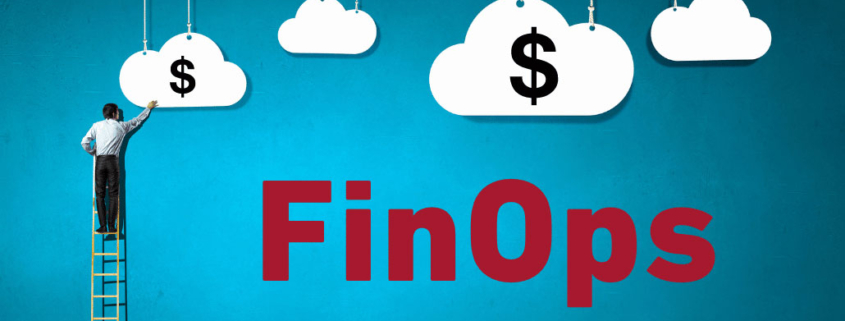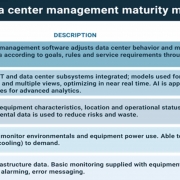FinOps gives hope to those struggling with cloud costs
Cloud workloads are continuing to grow — sometimes adding to traditional on-premises workloads, sometimes replacing them. The Uptime Institute Global Data Center Survey 2023 shows that organizations expect the public cloud to account for 15% of their workloads by 2025. When private cloud hosting and software as a service (SaaS) are included, this share rises to approximately one-third of their workloads by 2025.
As enterprise managers decide where to put their workloads, they need to weigh up the cost, security, performance, accountability, skills and other factors. Mission-critical workloads are the most challenging. Uptime Institute research suggests around two-thirds of organizations do not host their mission-critical applications in the cloud because of concerns around data security, regulation and compliance, and the cost or return on investment (ROI). Cost overruns are a particular concern: the deployment of new resource-hungry workloads means that unless organizations have better visibility and control over their cloud costs, this situation is only going to get worse.
This report explains the role that the fast-emerging discipline of FinOps (a portmanteau of finance and operations) can play in helping to understand and control cloud costs, and in moving and placing workloads. FinOps has been hailed as a distinct new discipline and a major advance in cloud governance — but, as always, there are elements of hype and some implementation challenges that need to be considered.
Unpredictable cloud costs
The cost and ROI concerns identified by cloud customers are real. Almost every company that has used the cloud has experienced unwelcome cost surprises — many organizations have paid out millions of dollars in unbudgeted cloud fees. This highlights how difficult it has been to plan for and predict cloud costs accurately.
In the early days, cloud services were often promoted as being cheaper; however, that argument has moved on with a focus now on value, innovation and function. In fact, cloud costs have often proved to be higher than some of the alternatives, such as keeping applications or data in-house.
It can make for a complex and confusing picture for managers trying to understand why costs have spiraled. Three examples of why this can happen unexpectedly are:
- Cloud migration. In many cases, organizations simply lifted and shifted on-premises workloads to the cloud, saving short-term recoding and development costs at the expense of later technical and operational limitations with cost implications. On-premises workloads were not built for the cloud, and without being modernized through cloud-native techniques, such as containerization and code refactoring, they will fail to benefit from the as-a-service and on-demand consumption models offered by the public cloud.
- Technical issues. Cloud platform incompatibilities, coding errors, poor integration and undiscovered dependencies and latencies result in applications performing inefficiently and consuming cloud resources erratically.
- On-demand pricing. The most common default way of buying cloud services has cost-effective ways to run some workloads, but not all. Amazon Web Services recommends on-demand pricing for “short-term, irregular workloads that cannot be interrupted.” On-demand therefore lends itself to workloads that can be switched on and off as required, such as build and test environments. However, mission-critical applications, such as enterprise resource planning and databases, need to be available 24/7 to ensure data synchronization happens continuously. If deployed on-demand, consumption costs will start to spiral — but an alternative pricing option, such as reserved instances, can enable substantial savings. It is critical to be able to match the right workload to the right cloud consumption model.
Failing to know which workload is best suited to which cloud consumption model can result in applications and workloads being unavailable when needed or overprovisioned (because they keep running in the background when not in use). Being under or overprovisioned may lead to unsatisfactory results for the customer and, ultimately, poor ROI.
To mitigate some of these issues, cloud providers offer different pricing plans to support different workloads and consumption requirements. However, it is still imperative for the customer to understand their own needs and the implications of these decisions.
This is where FinOps comes in. Customers cannot rely on cloud vendors to be impartial. They need to be able to identify their own optimum pricing models based on their workload requirements, consumption demands and use-case requirements. And they need to be able to accurately compare different providers and their products against one another to achieve the best value.
What is FinOps?
The advocates and suppliers of FinOps tools and practices set out to provide much-needed visibility into the costs of running workloads and applications in the cloud.
The non-profit organization FinOps Foundation describes FinOps as a “financial management discipline and cultural practice that enables organizations to get maximum business value by helping engineering, finance, technology and business teams to collaborate on data-driven spending decisions.”
Many of the disciplines and methods of FinOps are extensions of management accounting, applied to the complexities of digital infrastructure and cloud computing. Tools falling under the FinOps label have been developed that, in a slower-moving, less-automated environment, would be carried out by the finance teams using Excel. These tools can track consumption, model it, set alerts, apply showback and chargeback, and help manage and conduct scenario analysis to model the impact of using different services or developing or introducing applications. Governance and processes may be needed to identify or prevent overspend at an early stage.
The FinOps Foundation represents about 10,000 practitioners from various organizations worldwide, including around 90% of the Fortune 50. These companies have among the largest cloud spend of all corporates, and they are now helping to develop and standardize best practices for FinOps.
FinOps is helping organizations manage the growing complexity of their hybrid IT and increasingly multi-cloud environments. A recent report by management consultancy McKinsey & Company (The FinOps way: how to avoid the pitfalls to realizing cloud’s value) claimed that using FinOps can cut cloud costs by 20% to 30%. However, it also found that organizations do not develop at-scale FinOps processes until their cloud spend hits $100 million per year. This suggests that many organizations buying cloud services below this level have yet to adopt money-saving FinOps disciplines.
For the largest organizations, FinOps has rapidly become a critical part of modern cloud operations, alongside other important cloud operations disciplines, which include:
- DevOps. A set of practices to unite cloud software development and IT operations team objectives and outcomes.
- AIOps. The application of artificial intelligence (AI) and machine learning techniques for training and inferencing in IT operations.
- DataOps. A set of collaborative practices for managing data quality, governance and continuous improvement across IT and operations teams.
- Site reliability engineering. This combines software engineering with IT operations experts to ensure cloud system availability; through automation, monitoring, testing production environments and performing incident response.
Like these disciplines, FinOps fills a critical gap in knowledge and skills as more IT, data and systems are managed in the cloud. It can also help to break down operational silos between cloud and traditional enterprise functions. For instance, FinOps sits at the intersection of IT, cloud and finance — it enables enterprises to more efficiently report, analyze and optimize cloud and other IT costs.
Controlling, forecasting and optimizing the costs of running applications in the cloud can be challenging for several reasons, especially when, as is often the case, more than one cloud provider is either being used or being considered. Listed below are the challenges that control cloud costs:
- Cloud consumption is not always under the customer’s control, particularly in an on-demand pricing environment.
- Each cloud provider measures the consumption of its service in different ways; there is no standard approach.
- Each provider offers different incentives and discounts to customers.
- Each cloud service has many metrics associated with it that need to be monitored, relating to utilization, optimization, performance and adhering to key performance indicators (KPIs). The more cloud vendor services that are consumed, the more complex this activity becomes.
- Metrics are only sometimes related to tangible units that are easy for the customer to predict. For example, a transaction may generate a cost on a database platform, however, the customer may have no understanding or visibility of how many of these transactions will be executed in a certain period.
- Applications may scale up by accident due to errant code or human error and use resources without purpose. Similarly, applications may not scale down when able (reducing costs) due to incorrect configuration.
- Resiliency levels can be achieved in different ways, with different costs. Higher levels of resiliency can add costs, some of which may not have been planned for initially, such as unexpected costs for using additional availability zones.
Why FinOps’ time is now
FinOps is not just about cost containment, it is also about identifying and realizing value from the cloud. One of FinOps’ goals is to help organizations analyze the value of new services by conducting a full cost analysis based on data. FinOps aims to close the gap between the different teams involved in commercial and financial calculations and in the development and deployment of new services.
The FinOps function — at least in some organizations — sits outside of the existing IT, finance and engineering teams to provide an independent, objective voice to arbitrate and negotiate when needed.
These are the key reasons driving FinOps adoption:
- Cloud bills are increasing as adoption grows across the business and are now attracting attention from stakeholders as a significant long-term expense.
- Growth in hybrid IT, where organizations use a mix of cloud locations and on-premises facilities, has stimulated the need for accurate data to make more informed decisions on workload placement.
- AI model training and inferencing is a new asset that will drive (possibly explosive) demand for hybrid IT — both on-premises and public cloud consumption. Optimized financial processes that can predict capacity, consumption and bills will be essential.
- In the years to come, many organizations will need to make strategic decisions about where to place large workloads and whether to use their own, colocation or cloud facilities. Better tools and disciplines are needed to model the very significant financial implications.
Macroeconomic conditions (notably rising inflation) are forcing organizations to reduce expenditure where possible to sustain gross margins.
Governance over digital infrastructure costs
Uptime believes that the more successful digital infrastructure organizations will develop FinOps capabilities over the coming years as cloud services — and their huge costs — become more embedded in the core of the business. This will bring a level of governance to cloud use that could be profound. In time, the larger organizations that depend on hybrid IT infrastructure will likely extend the discipline — or some integration extension of it — to cover all IT, from on-premises to colocation, hosting and cloud.
Despite the hype, some measured skepticism is required. In its simplest iterations, FinOps can bring down obvious cloud overspend, but it can also add costs, complexity and slow innovation. Further, it is still unclear to what extent new and dominant tools, standards and disciplines will become firmly established, and how integrated these functions will become with the rest of the digital infrastructure for financial management. Ideally, chief information officers and chief financial officers do not want to battle with an array of accounting methodologies, tools and reporting lines but instead use integrated sets of tools.
Most cloud providers already supply documentation and tools related to FinOps. This free capability represents a good starting point for implementing FinOps practices. However, cloud provider support is unlikely to be useful in making the organizational changes needed to help bridge the gap between finance and IT. Furthermore, the support provided by a cloud provider will only extend to the services offered by the cloud provider — multi-cloud optimization is far more complex. FinOps capabilities presented by cloud providers cannot offer an unbiased view of expenditure.
Third-party tools, such as Apptio Cloudability, Spot by NetApp, Flexera One, Kubecost and VMware Aria Cost, provide independent FinOps toolsets that can be used across multiple clouds. But larger cloud customers have resorted to developing their own tools. Financial giant Capital One built its own cloud financial management tool because it found its FinOps activities had outgrown its original commercial off-the-shelf product.
FinOps is an emerging discipline, and there is still work being done to achieve standardization across all stakeholders and interests. This is an important area for organizations to watch before they go too far with their investments.
The Uptime Intelligence View
It is clear there is huge cloud overspend at many organizations. However, cloud expenditure can only be effectively managed with specialist domain skills. Finance and IT need to work together to manage cloud costs, and a FinOps function is required to help strike a balance between cutting costs and enabling scalability and innovation. FinOps, however, should not be embraced uncritically. Software, standards and disciplines will take many years to mature. Ultimately, FinOps can become a foundational part of what is ultimately needed — a way to comprehensively manage and model all digital infrastructure costs.





 2020
2020




